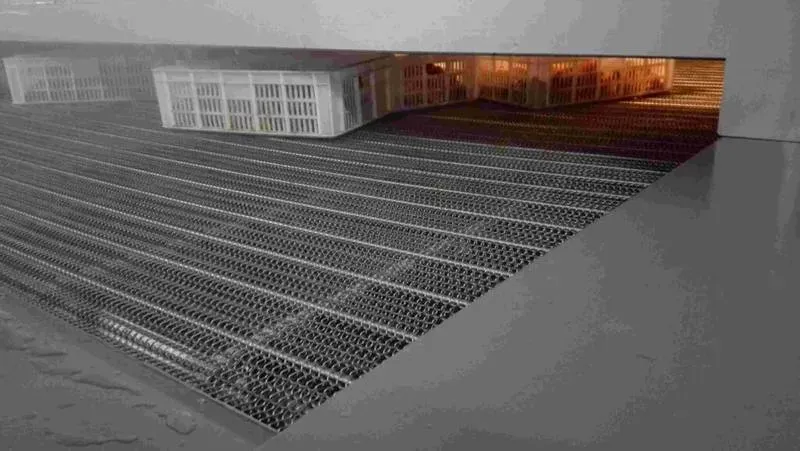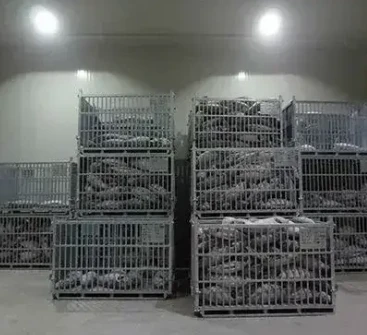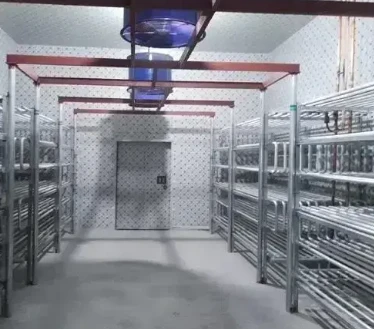20 Ton Chiller Solutions for Efficient Cooling in Commercial Applications
Understanding 20 Ton Chillers A Comprehensive Overview
In the modern landscape of HVAC (Heating, Ventilation, and Air Conditioning) systems, chillers play a critical role in providing efficient cooling solutions for commercial and industrial applications. Among various options available, the 20 ton chiller has gained significant popularity due to its balance of performance, size, and energy efficiency. This article delves into the concept of a 20 ton chiller, its operational mechanisms, applications, and considerations for selection.
What is a 20 Ton Chiller?
A 20 ton chiller is a cooling system capable of removing heat equivalent to 20 tons of refrigeration, which translates to approximately 240,000 BTUs (British Thermal Units) per hour. This capacity is often suitable for medium to large facilities, including office buildings, manufacturing plants, and data centers. Chillers work by circulating refrigerant through a closed-loop system, absorbing heat from the environment and releasing it outside, effectively maintaining a desired temperature in the spaces they serve.
Types of Chillers
There are primarily two types of chillers air-cooled and water-cooled.
1. Air-Cooled Chillers These units reject heat to the atmosphere using ambient air. They are typically easier to install and require less space than water-cooled systems. However, they may be less efficient in extremely hot climates.
2. Water-Cooled Chillers In contrast, water-cooled chillers use water from a cooling tower to disperse heat. These systems often provide better efficiency and are suited for larger applications but require a more complex installation and ongoing maintenance for the cooling tower.
Features of 20 Ton Chillers
When selecting a 20 ton chiller, several key features should be considered
- Efficiency Ratings Look for chillers with high Energy Efficiency Ratings (EER) or Coefficient of Performance (COP). These ratings will give you insights into the operational efficiency, helping to reduce energy costs over time.
20 ton chiller

- Refrigerant Type Modern chillers often use environmentally-friendly refrigerants that have lower global warming potential (GWP). Common refrigerants include R-410A and R-134A.
- Programmable Controls Advanced controls allow for improved operational efficiency through smart scheduling, enabling the system to adjust to the specific cooling loads and optimize energy use.
- Modularity Some chillers offer modular designs, allowing for scalable capacity, which can be beneficial for facilities that anticipate growth.
Applications of 20 Ton Chillers
The 20 ton chiller is versatile and serves various applications, such as
- Commercial Buildings Office buildings and retail spaces often require reliable cooling to maintain comfort for occupants. - Industrial Processes Many manufacturing operations require precise temperature control for optimal production conditions.
- Data Centers Maintaining an ideal temperature is critical for the operation of servers and other sensitive equipment in data centers.
Maintenance Considerations
Regular maintenance of a 20 ton chiller is crucial for ensuring longevity and efficiency. This includes checking refrigerant levels, cleaning coils, inspecting electrical components, and maintaining water treatment programs in water-cooled systems. Developing a systematic maintenance schedule is recommended to prevent unexpected breakdowns.
Conclusion
Choosing a 20 ton chiller involves understanding the specific cooling needs of your facility and evaluating the available options. With their balance of efficiency and capacity, these systems play an indispensable role in modern climate control solutions. By prioritizing proper selection and maintenance, building owners can ensure optimal performance, contributing to energy savings and comfort in their spaces for years to come.
-
Transform Operations with Vacuum Freezer MachineNewsMay.14,2025
-
Enhance Business with Cold Room TechnologyNewsMay.14,2025
-
Vacuum Freezer Machine for Modern NeedsNewsMay.09,2025
-
Discover Our Comprehensive Cold Room SolutionsNewsMay.09,2025
-
Cold Room Solutions for Your BusinessNewsMay.08,2025
-
Advanced Vacuum Freezer MachineNewsMay.08,2025
















































































































